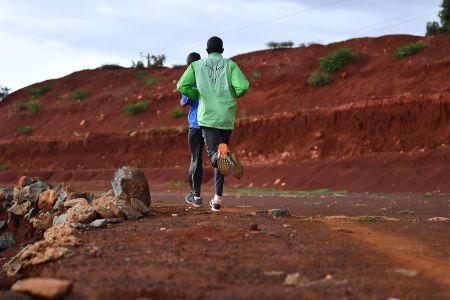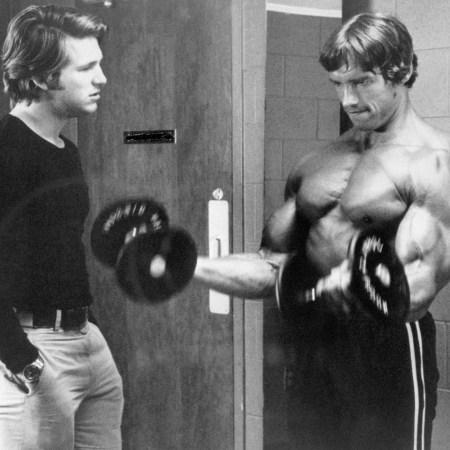Earlier this month, a Japanese runner named Kazuto Iizawa ran a 3:56.01 mile at Boston University’s Scarlet and White Invitational. The mark broke Japan’s all-time record in the event, though you wouldn’t have known from listening to FloTrack’s broadcast.
The commentator conducted a forgettable interview with another athlete throughout the race — discussing indoor track mundanities like rabbits or the “sponginess” of the track — and resumed it right after Izawa rode a titanic kick to his national mark. The not-so-subtle subtext: sub-4:00 is impressive, yes, but we’re used to it.
It takes a tremendously-sub-4:00 race, like Yared Nuguse’s 3:47.38 at this weekend’s Millrose Games (the new North American record, and milliseconds off the all-time indoor mile record), for the running world to take notice. Nuguse, a Notre Dame grad and just 23 years old, has a glittering future and deserves every ounce of the attention he’s getting. American middle-distance is in good hands.
But when runners are running this fast, and this routinely, have we lost our collective wonder for the sub-4:00 mile, once seen as scientifically impossible? Does the barrier even matter anymore?
5 Lessons From the Running Capital of the World
Kenya’s training mecca prioritizes simplicity and recovery, above all elseDetractors could point out how commonplace the mark has become, which is fair — 1,663 athletes have broken it during the last 70 years. Even in Iizawa’s race, three members of the Harvard track team broke 4:00, and a fourth was knocking on the door at 4:02.
At the same time, concern continues to mount over the advent of superior performance technology, like New Balance’s hydraulically-banked, self-proclaimed “fastest track in the world,” or the proliferation of “super shoes.” Every reputable brand now makes a lightweight, carbon-plated sneaker with energy-returning foam. And at the last U.S. Olympic Track & Field Trials, Nike debuted a super spike, which was evidently so fast that competing brands like Adidas, Asics, Hoka, New Balance, Puma and Under Armour allowed their athletes to race in it. They figured they’d keep their athletes happy and medaling in the short-term, and give their R&D teams a chance to catch up in the long-term.
For some in the running community, all these bells and whistles are dubious and disqualifying. As Outside reported in a recent article, Track & Field News started a Twitter war last week after it announced it would stop updating its chronological list of sub-4:00 milers with the following statement: “The advent of super-shoes has bombarded the 4:00 barrier into something no longer relevant for tracking, although many new members would have made it even without high-tech footwear.”
Hmm. The publication eventually changed its tone — after substantial blowback from young and old track stars alike — and resolved to continue updating the list. In a separate email to Outside, the editors explained their initial rationale: “The original decision was simply based on our (non-scientific) belief that the stat had lost its popularity. In retrospect I now think the opposite might be true, as modern shoes/tracks/training have combined to make a shot at a sub-4:00 now a reasonable goal for a lot more people.”
That about-face ushers in a fascinating idea — even as sub-4:00 matters less to the running world, the mark matters just as much to the individual runner trying to attain it. Elite middle-distance runners want their mile time to start with a three. That will never change. And what are they supposed to do about the newfangled tech, anyway? Buy old shoes? Simulate Roger Bannister’s iconic afternoon in 1954, with loafers and a cinder track?
In some ways, the mile run is in a bit of a no-man’s land, considering researchers have pegged a sub-three minute mile as “scientifically and physiologically impossible” (which, this time, has to be correct, right? No way our species can run 20 miles per hour for that long). A time of 3:18.87 is considered the absolute upper limit, within the bounds of decades of human evolution, but that doesn’t have much of a ring to it.
For now, let’s continue to celebrate and admire something that less than 2,000 people are on record doing. Ever. Fortunately, there’s a project underway in Oregon, mere miles from the legendary Hayward Field, where a sustainable running project called Endless Mileage is planting a tree for every man who’s ever broken the 4:00-minute barrier, and every woman who’s gone under 4:30 (seen as an imperfect, but suitable parallel). It’s called Fast Forest, and you can run right through it.
The creators have the right idea. Their site reads: “When you see someone do the impossible, everything becomes possible.” Whether the impossible is 3:59:59, 3:56:01, 3:47.38 or 3:18.87, it’s all special.
Thanks for reading InsideHook. Sign up for our daily newsletter and be in the know.


















